The Group B Rallying era will forever be the greatest time of rallying. At the time it was more famous than Formula 1, a sea of spectators flooded every event, and it created some of the most legendary machines to ever grace rallying and motorsport as a whole. Group B will never be fully recreated even though the new WRC 1 rally cars have reached power figures of the Group B machines and are even faster as they have a good 40 years of development, with their aero packages, hybrid systems, sequential transmissions and clever four wheel drive systems that vector the torque between each axle. WRC 1 is spectacular, and I’m not taking away from it when I say it will never have the same charm of Group B, as the cars in WRC 1 are spec cars, they have to have the same engine capacity, hybrid systems, weight and more or less the same four wheel drive system. Group B on the other hand, had minimal rules in terms of car regulations, meaning that we saw rear wheel drive, all-wheel drive, front engined, mid engined, rear engined, N/A, turbocharged, supercharged, four and six cylinder cars all compete with one another, which furthermore made each team and manufacturer push the boundaries of motorsport like never before. Which brings us to the Lancia Delta S4 Evoluzione, arguably the ultimate car of the Group B era.
BACKGROUND
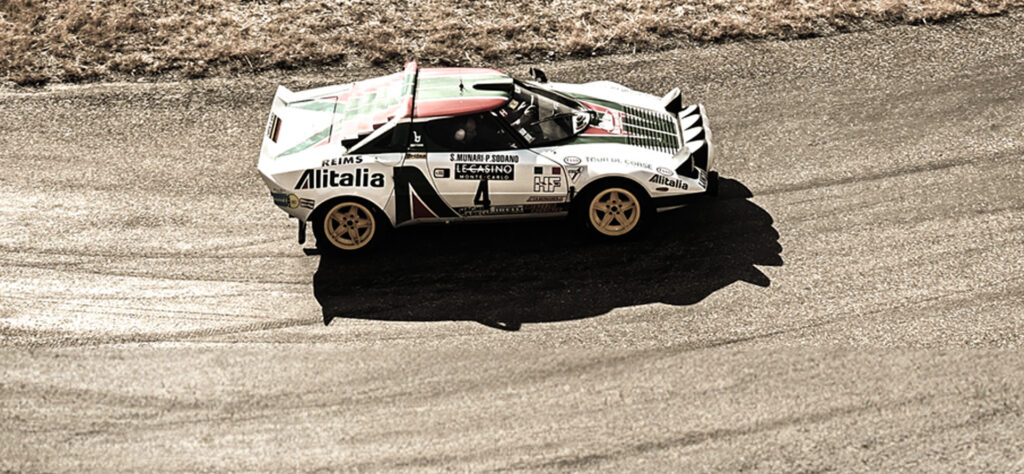
Between 1974 and 1976, Lancia dominated the world rally stage with the Lancia Stratos, a hasbulla sized, fast as Usain Bolt machine, which quickly established itself as one of the most successful rally cars of all time winning three Manufacturers’ titles for the Turin-based firm. However, when it came to entering the 1977 season, Lancia’s parent company, Fiat, decided to pragmatize their racing activities.
Fiat and Lancia were rivals, going head to head with one another on the rally stages for multiple years. Although, that came to a close when Fiat decided that they’ll have themselves and manufacturers they own represent them in different racing disciplines. Abarth (acquired by Fiat in 1971) would go rallying with the 131 from ’77. On the other end of the spectrum, Lancia(acquired by Fiat in 1969), would represent the Fiat group in sports car racing, while the boys and girls from Maranello, Ferrari (also acquired by Fiat in 1969) would compete in Formula One.
For the remaining years of the group 4 era, the Fiat Abarth 131 continued where the Lancia Stratos left off for the Fiat group, going on ahead to thrash the competition, claiming three back-to-back Driver and Manufacturer world titles. Things would change for the upcoming Group B era, which was set to kick off in 1982. Fiat decided to go back to the same formula of the Stratos and spawned exotic machinery that would better serve their upmarket Lancia brand, this was also helped by the relaxed regulations of the Group B era.
To enter into Group B, manufacturers had to build 200 road going versions of their competition cars, instead of 400, like in the Group 4 era. This allowed manufacturers to build the most extreme competition cars ever seen, which ended up sharing little to nothing with the road going cars.
The result from this was the 037, backed by Martini and designed by Abarth, was conceived for the 1982 season. In many respects, the 037 is a modern Stratos. They were both built using exotic materials with mid-engine layouts and designed to purely win rallies. Like the Stratos, Lancia chose to give the 037 rear wheel drive as they believed four-wheel drive to be too heavy and too complexed. In the end, this ultimately proved to be the 037’s undoing.
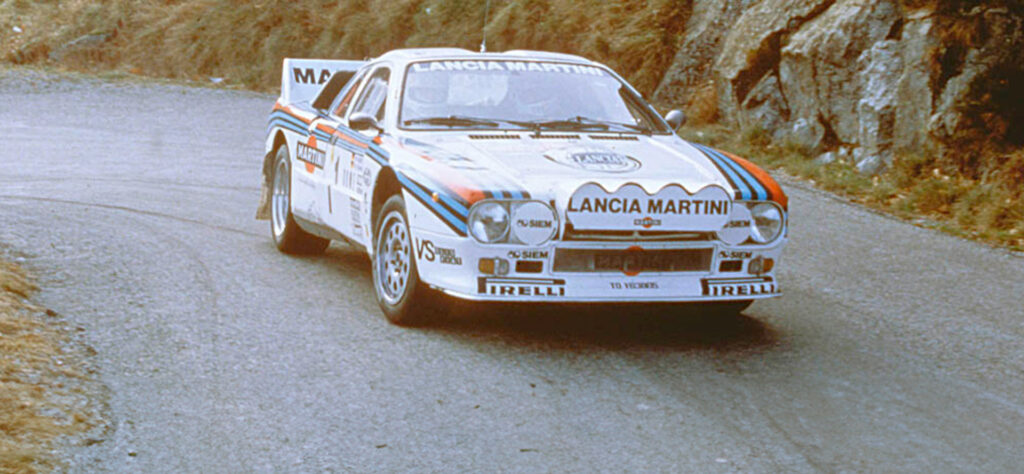
For the 1983 season, Lancia did manage to lift the World Manufacturer’s title from Audi (who won in 1982 with their less exotic, Four-wheel drive equipped Quattro). The 037 was the last rear-wheel drive car to win the Manufacturer’s title and in its service it didn’t manage to deliver a world’s drivers title. In the following years, the 037 was easily trounced by the new machinery of the Group B era in all ways as they were purposely built for rallying and all came equipped with four-wheel drive. As much as the 037 could compete on tarmac rallies, it stood little to no chance against the new breed of cars over the course of a season.
With their slump in performance and being competitive over a course of a season, Fiat approbated a replacement for the 037, even before the arrival of the Peugeot T16 at the Tour de Course in May 1984. For their next competition car, Lancia decided to follow the approach Peugeot (which had done wonders for 205 sales) used with their car, the T16. The new car would resemble one of Lancia’s production cars, the Delta.
However, this new challenger would push the Group B regulations to their absolute limit. What was born, was the car that many, including their rivals, would call the ultimate rally car ever built.
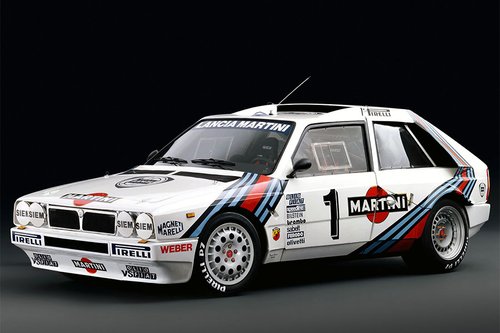
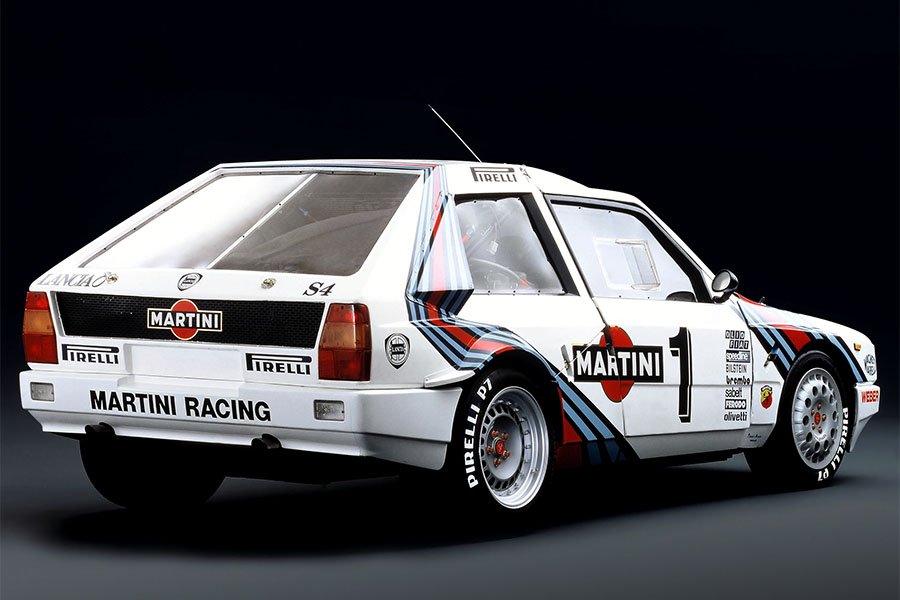
The first S4 prototype emerged alive back in June 1984, then Lancia began working on their competition car first, and reverse engineered a production car from that. However the whole project did come with its fair share of delays, as they had technical issues, more especially with the S4’s four-wheel drive system. The S4 Evoluzione prototype made its first appearance during a Turin press conference in December 1984, by that point, Lancia had announced that they wanted to make their World Rally Championship debut with the new challenger on the 1000 Lakes event in August 1985.
Chassis
As the S4 Stradale, the Evoluzione version was based around a tubular spaceframe made from chrome-moly alloy steel. Carbon fibre was added to the longitudinal and diagonal chassis sections for additional reinforcement. At either end of the S4, aluminium alloy sub-frames were attached.
Lancia wanted to provide greater stability and more predictable handling characteristics than their outgoing challenger, the 037, so they decided to increase the overall wheelbase by 200mm. Reinforced and fully adjustable suspension comprised long-travel double wishbones with coil springs and hydraulic shocks (two per side at the rear). At either end of the S4, they fitted anti-roll bars.
The 300mm diameter vented brake discs were retained from the 037. Though for the Evoluzione, older original single-piston aluminium alloy calipers from Brembo were thrown out in favour of four-piston items from Brembo and brake bias became adjustable from within the cockpit. On top of that, an uprated hydraulic handbrake was added to the mighty S4.
In the wheel department, the S4 came with 16-inch Speedline wheels which were fitted with Pirelli P7 tyres. In the front, they measured at 8-inches (205mm) wide at the front and they measured at 10-inches (255mm) at the rear. ZF supplied the new Evoluzione a specific power steering system.
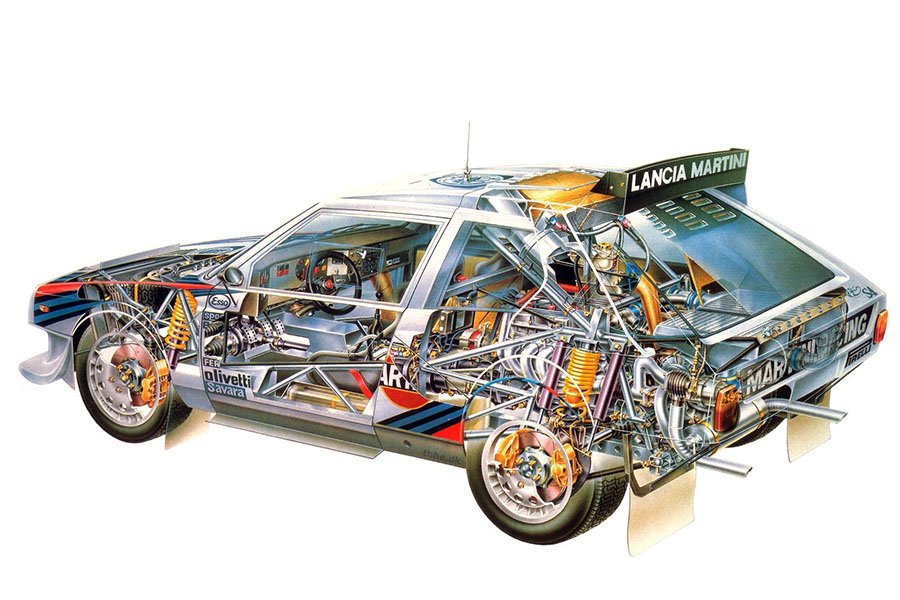
A fuel tank of between 70 and 110-litres was installed up against the rear bulkhead, depending on the nature of each event.
Engine and Transmission
For the S4, Lancia brought back the Abarth designed Tipo 233 ATR 18S from the 037, but this time around it was extensively reworked and enhanced to bring it up to pace with the competition.
Designed specifically for rallying, Lancia placed the all alloy engine longitudinally, and the 18S came featuring a DOHC 16-valve head, dry-sump lubrication and they famously incorporated a twin charge system with both a supercharger and turbocharger. This twin charge system was made to reduce lag and boost torque, as compressed air from the supercharger was sent to spool up the turbo which, combined with additional gases from the exhaust manifold, which was further compressed by the vanes of the turbocharger. The combined forced induction was then sent through the inlet manifold and into each cylinder.
The engine capacity and the forced induction was chosen to come in at under 2.5 litres when the FIA’s 1.4 multiplier for turbocharged engines was applied, which put the Delta S4 in the 2000cc-2500cc class, a class which had a minimum weight limit of 890kg. Lancia decided to go for a displacement of 1759cc and achieved this thanks to a bore and stroke of 88.5mm and 71.5mm. When the multiplier was applied this for its forced induction, this basically brought the Lancia to 2463cc.
For the Evoluzione trim, the pistons, connecting rods, crankshaft, flywheel, intake and exhaust manifolds were upgraded by Abarth, including the dry-sump lubrication system, which gained an additional radiator fed through a duct mounted on the roof. The original multipoint fuel injection system, the Weber Marelli IAW 018, was switched for an IAW 060 item, with four instead of eight injectors plus different fuel lines and pressure regulators.
Just like the fuel injection system, the Stradale’s KKK K26 turbocharger was chucked away to be able to make way for a new bigger K27 item. The Abarth supercharger also increased in size and gained one additional exit port, to make it have three exit ports, instead of the original two exit ports. Upgraded air-to-air Behr intercoolers were fitted for both the turbocharger and supercharger, each of which got its own custom-sized exhaust.
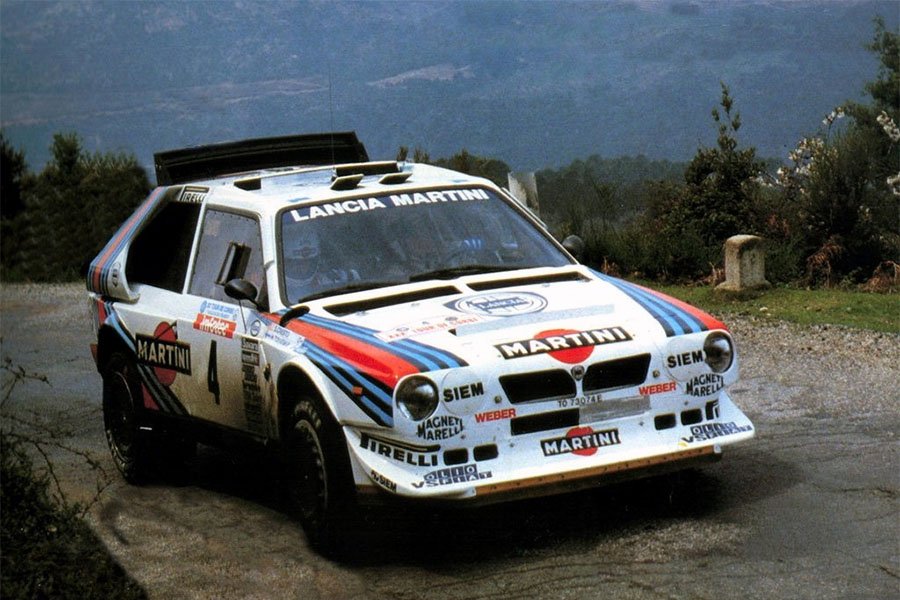
The compression ratio saw an increase too, one of which was done very slightly (from 7.01: to 7.1:1), as they deemed that slight increase as necessary, from all of the host of improvements that were made and attained.
In the beginning, Lancia quoted a peak output of 450bhp at 8000rpm and 289lb-ft at 5000rpm. That saw an increase very soon after to a peak output of 480bhp at 8400rpm and 362lb-ft at 5000rpm thanks to a couple of tweaks to the turbo, like the boost pressure for instance. Although, the performance figures didn’t finish there as by the end of 1986, the engine was capable of producing power in excess of 520bhp.
In the transmission department, the Evoluzione came fitted with a reinforced straight-cut five-speed item from Hewland. This transmission was clothed in a light weight casing made of magnesium and was connected up to an AP Racing twin ceramic-plate clutch.
The transmission went through a central Ferguson differential with viscous coupling and a self-locking limited-slip differential for each axle (ZF with titanium axle shafts at the front and Hewland with reinforced steel axle shafts at the rear). The Hewland item at the rear would later be dropped in favour to use ZF for both the front and rear. The torque split was able to be fully adjustable. Lancia normally went for a 30:70 bias on gravel and 25:75 on tarmac.
Bodywork
The S4 Evoluzione was adorned with body panels made entirely from carbon fibre Kevlar composite. Compared to the prototype unveiled in December 1984 (which the S4 Stradale was based on), the Evoluzione, which was homologated on November 1st 1985 came with some key changes.
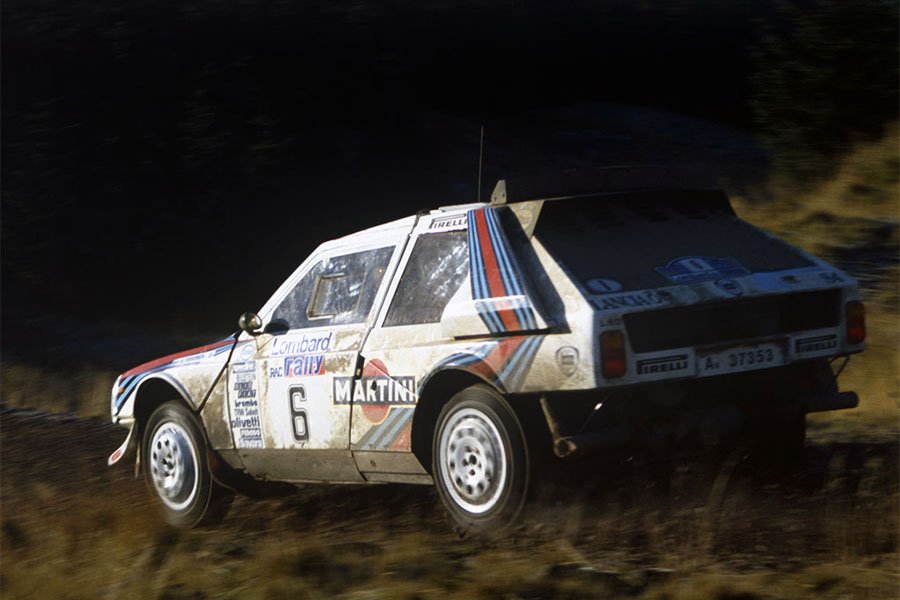
At the front, the S4 came with a more aerodynamically efficient single-piece body section (instead of separate hood and bumper assemblies) that featured shrouded headlights, a huge integrated chin spoiler, revised intakes, bigger ventilation outlets and subtle fender flares.
For the rear of the car, it was given the same treatment as the front. The rear bumper got thrown out the window, simplified light clusters replaced the original Delta items, more discrete fender flares were added, and the intakes mounted on the C-pillar got substantially larger. The roof (which retained the original full width intake) was tweaked to be able to incorporate a pair of cockpit cooling ducts and a huge adjustable rear spoiler. With all of this, it means that Lancia could be able to fully detach the front and rear body sections. Also, all the glass on the car got replaced with Plexiglas.
Interior
On the inside, the S4 Evoluzione had little resemblance to the standard S4 Stradale.
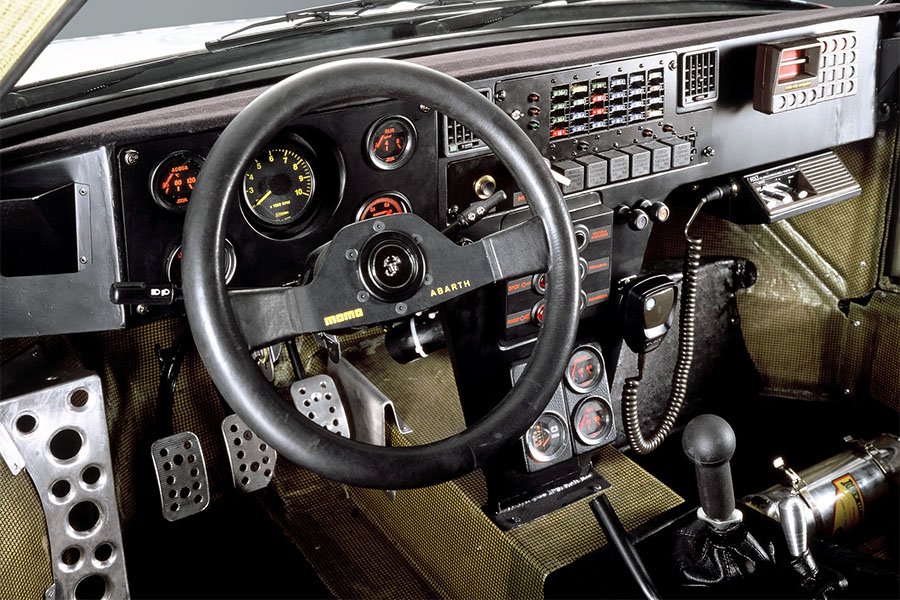
The elegant dash from the road car was replaced with an un-trimmed, boxy, satin black dash, that had all the equipment required for top notch rallying. Sitting behind the two-spoke Momo steering wheel was a rev counter that went up to 10000rpm, besides that, there were multiple smaller gauges and illuminated warning buttons. The dash also had various cut-out switches, an exposed fuse board, a trip meter and the radio equipment.
Besides the Sparco racing bucket seats, there was no upholstery to speak of. The racing cockpit had simple mix of exposed composite weave, bare metal and heat insulating material. As the result of an increased wheel base, the S4’s cockpit was quite a bit roomier than that of the 037.
Weight/ Performance
The S4 Evoluzione usually weighed in at between 950kg and 1050kg depending on the nature of each given event. These weight numbers saw a little increase just over 1060kg when the revised fire systems was brought in after the fatal accident of Henri Toivonen and Sergio Cresto on the 1986 Tour de Corse.
Usually for the tarmac events, the S4 ran at the lighter end of its weight range, and for the gravel events, it ran at the heavier end of its weight range due to additional underbody protection that was needed for the harsher gravel.
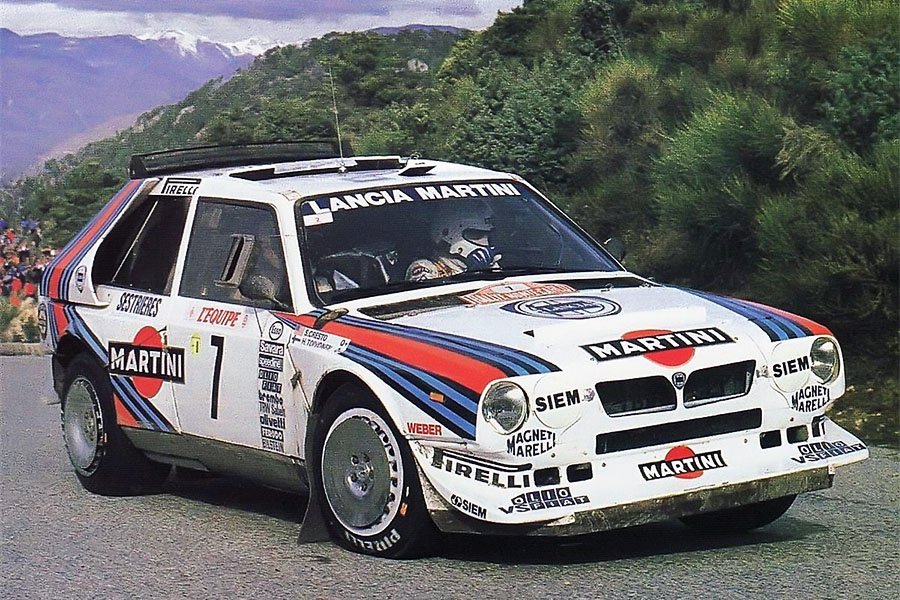
A 0-62mph time of less than three seconds could be achieved, depending on the gear ratios, and a top speed of 160mph was possible with the longest gear ration installed in the car.
Closing
The S4 kept on getting better and better during the time it competed as it got numerous improvements in the likes of performance and safety updates from the first day it competed, all the way to its last day in World Rally competition.
A turbo with revised exhaust gas outlets was homologated along with a revised final drive transfer case, carbonfibre front driveshafts, centre lock wheels, uprated cross-drilled and vented discs and further reinforced rear shocks with a limited rebound system, of which all came in January 1986.
Further more down the line during April – July 1986, a set of carbonfibre chassis reinforcements were changed for titanium. An addition of further reinforced suspension wishbones and driveshafts plus an uprated brake cooling system were added to the mix as well.
Items like the suspension pick-up points, springs, dampers, wheels and tyres were routinely updated, often from one major event to the next.
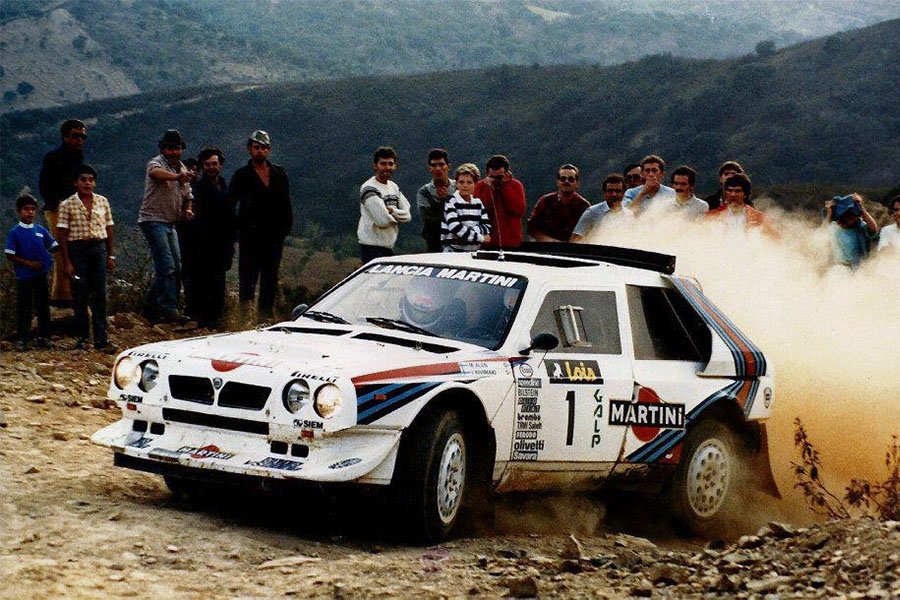
The Lancia never got the chance to stretch its legs in a full season, so therefore doesn’t have a single championship to its name, but that’s understandable as it really competed for a year when you calculate its time in competition. With drivers like the legendary Markku Alen and Henri Toivonen, the S4 was always a front runner, but was not consistent with its reliability, which made things quite tough for the team and drivers to always stay at the top.
Even though the lack of championships may say otherwise, the Lancia Delta S4 Evoluzione was and is the fastest and quickest car of the Group B era. It is a car that was at the very limit of the regulations, making it the ultimate car to come out of Group B.
Research copyright: Supercar Nostalgia – https://supercarnostalgia.com
Photo copyright: Lancia – https://www.lancia.com



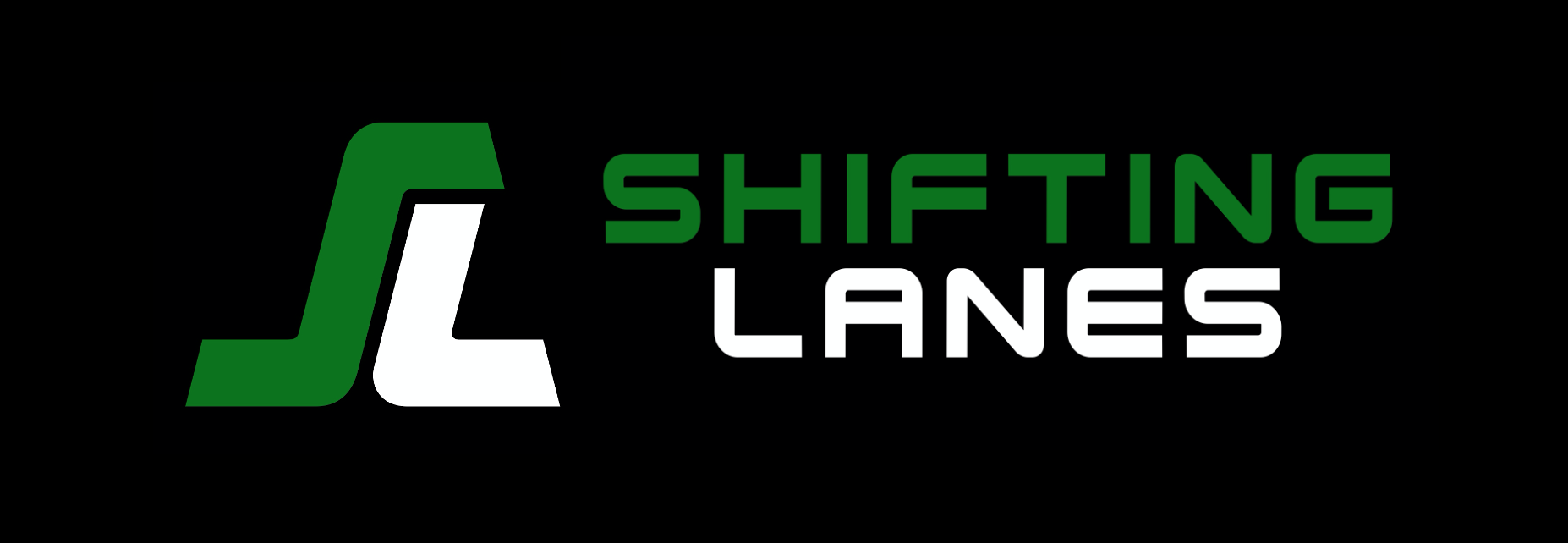
Leave a reply